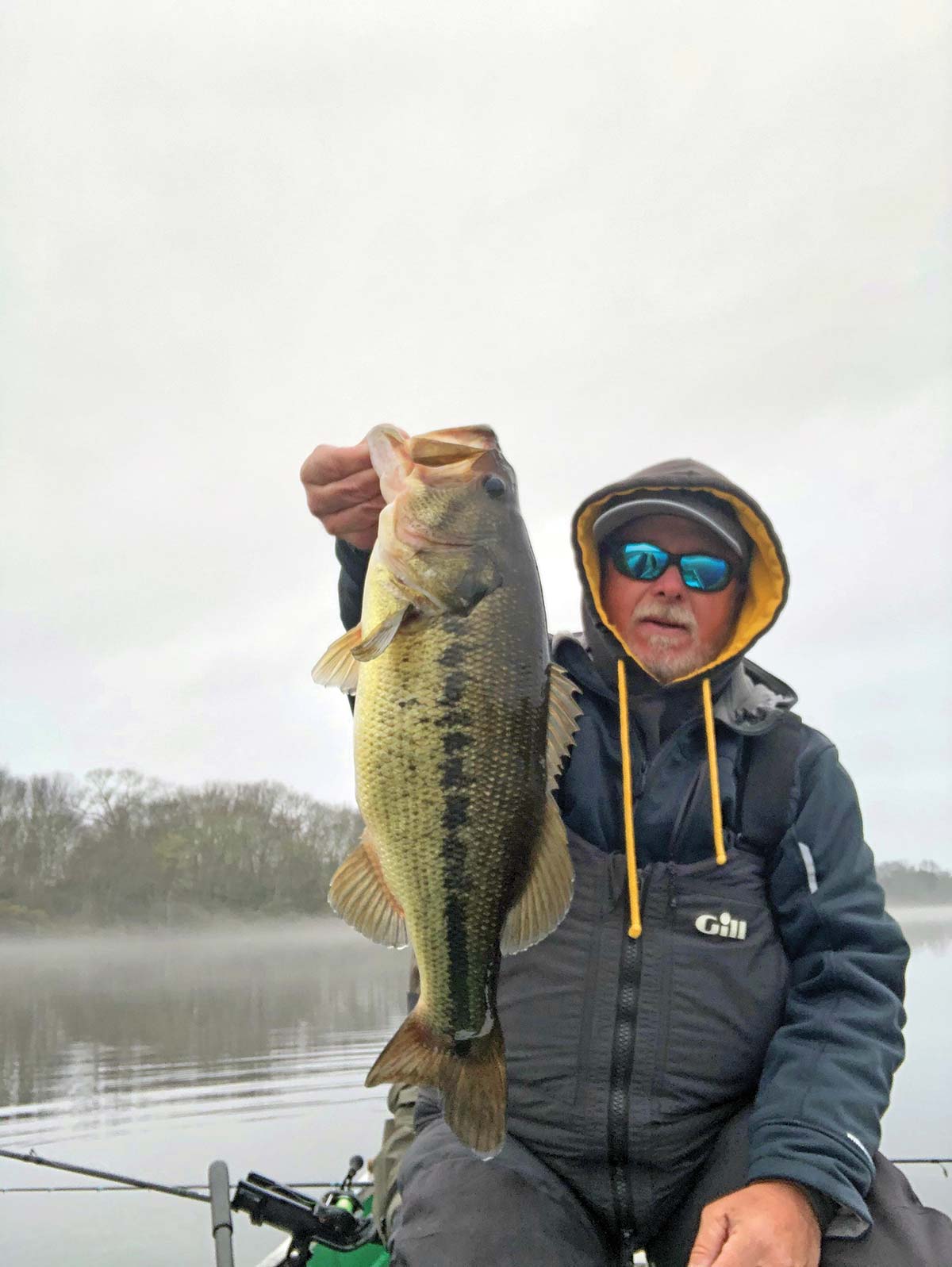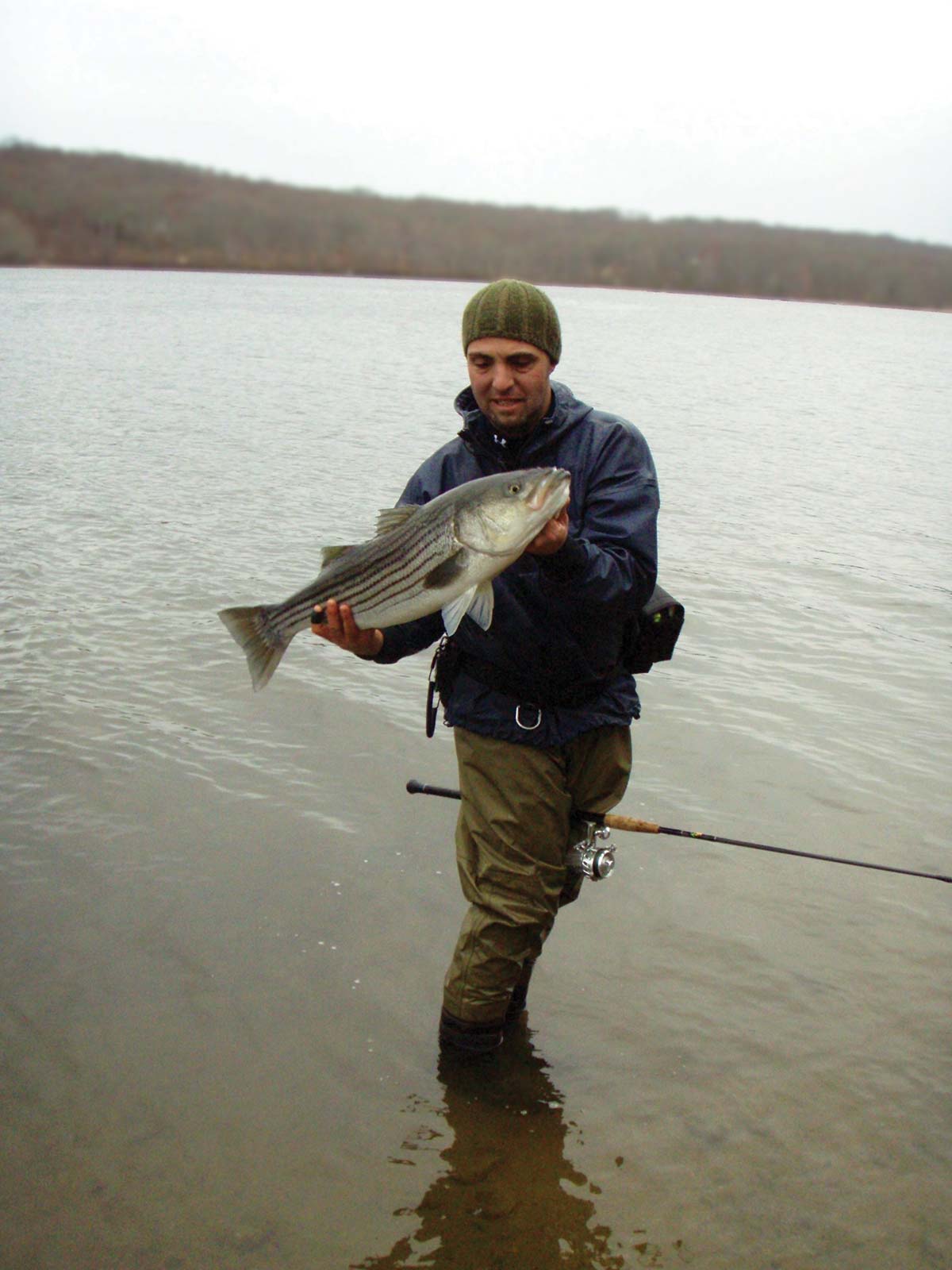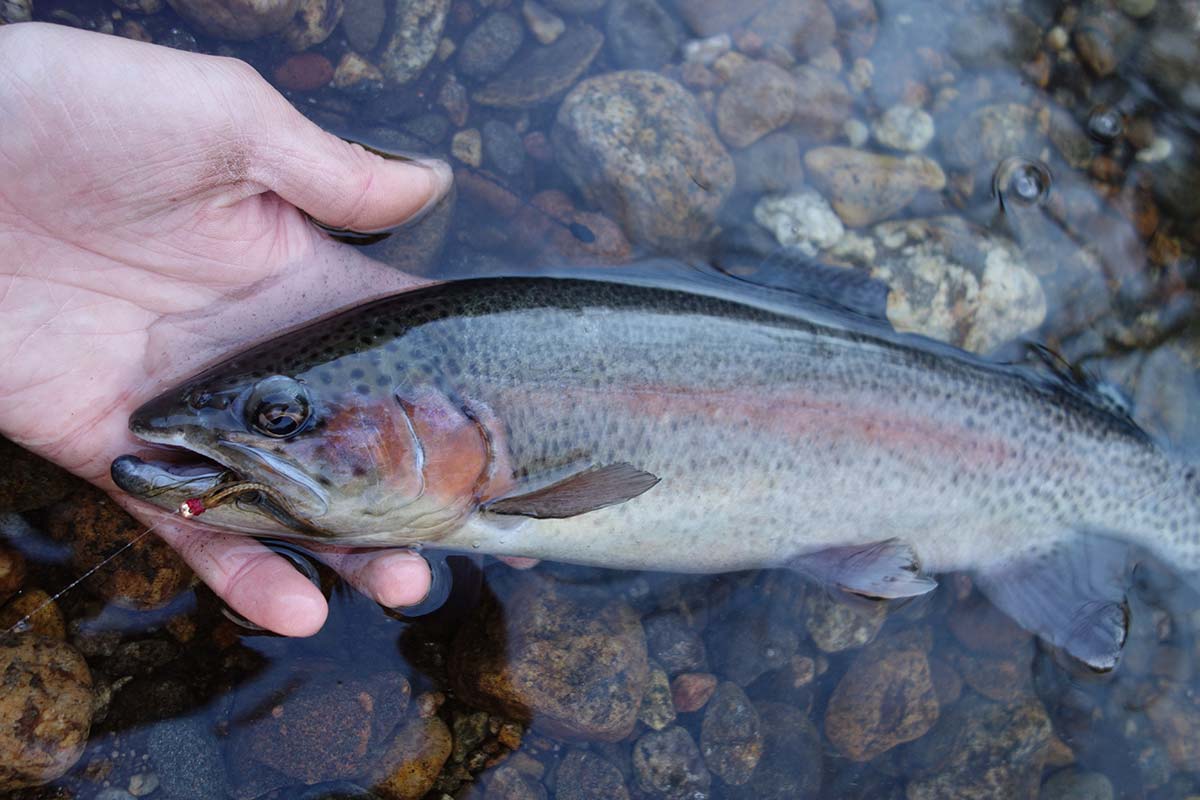
Four February fisheries that might not require drilling a hole in the ice.
February is an inhospitable month for the rod and reel angler, unless you spend your time jigging through the ice. However, during all but the coldest years, there are a few open water options that New Englanders can count on to bend the rod when cabin fever is at its worst.
The most important things to do up front when you’re setting out for a February fishing trip are dress warmer than you think you should and pick your days. If it’s 28 degrees out with a stiff north wind, you’re not going last very long out there and you’ll be setting yourself up for frustration and failure – ice in the guides and numb fingers can kill a well-intentioned trip in a heartbeat. So hit your rod guides with Pam Cooking Spray (it works) and overdress – the rest will hopefully take care of itself.
Striped Bass: The Housatonic River
Most striper-obsessed anglers will devote at least one year to the personal goal of catching a striped bass in all twelve months. All too often, these hopes are dashed in February. It all boils down to the weather, which can lock holdover waters up with ice or can render it just too uncomfortable to fish. If we are going to experience a subzero cold snap in southern New England, it’s probably going to happen in February. But there are other factors at play here, the bite tends to change considerably during the coldest month of the year, my experience has been that there is often a very short bite window for holdover bass when the water is especially cold – and I have seen times when they just would not bite all day long.
Holdover stripers will go into a semi-dormant state known as ‘torpor’ during periods of extreme cold, sometimes it is still possible to annoy them into biting, but sometimes it’s not. The first key to hooking up is to find ways to fish as slowly as possible. This means using very light jigheads and casting way up-current while trying to the guide the bait through the strike zone without influencing or altering its natural path. I also recommend keeping your offerings on the smaller side at this time – a smaller lure will be attractive to a wider size range of fish.
When trying to hit one of the bite windows, they have often opened for me around environmental changes; tide changes, light changes and weather changes. I remember one grueling daytime run to the Housy in February where we fished for like 7 hours without a single bump and then the fish turned on for about 15 minutes right after it became fully dark. The most reliable variable in my experience has been precipitation, if it rains or snows, the fish tend to turn on. I don’t know if it’s a change in salinity, water temperature or – as some have suggested to me – that the runoff forces baitfish over Derby Dam and into the lower river, but whatever it is, it definitely has an effect. My advice is to stack the odds in your favor; try to hit warmer days (or nights), fish after or during rain or snow, fish through a light transition and during the stronger tides of the full or new moons.

Coastal Ponds: Largemouth Bass
Ever since I moved to the shore 20 years ago, I have noticed that there seems to be a climate divide somewhere between 10 and 20 miles inland from the saltwater shores of southern New England. Look at the accumulations map for any major snowstorm and you’ll see that the shoreline, except in those rare ‘perfect’ scenarios, sees higher temps and a lot less snow, this typically also translates to a lot less ice on the ponds. But even in years when the coastal ponds do freeze over, they often clear up before the end of the month.
There has long been an accepted myth that largemouth bass become lethargic and very hard to catch during the height of the winter and this would be true if you were to keep throwing the same lures you were throwing in July. Changing your lure selections to baits that can be fished extremely slow is the first step in scoring a few cold water largies. Most of my success has come on suspending jerkbaits, Ned Rigs and jigs. I’ll be upfront with you by saying I am pretty new to the Ned Rig, but boy do they work! It almost seems like the ‘Ned’ is so effective because it’s so unintimidating. Drag these tiny finesse worms along as slowly as you can stand and you’ll see that they’ll catch just about any fish in the lake.
I like jigs and jerkbaits because they can be fished almost stationary. A good jerkbait like a Vision 110, will hang in the water almost indefinitely, and there have been times when I needed to pause the bait for a true 15 seconds to get a hit, and a few times when experimenting with ridiculously long pauses has caught fish. The philosophy here is that cold water temperatures can wreak havoc on small baitfish, and these ‘kills’ that often happen when windblown shorelines are piled with the slush of a lake that’s nearing 32 degrees, leaving dead and dying baitfish open for easy takedown by winter-starved bass.
The jig is a deadly weapon 365 days a year, in the winter, targeting deep structure will allow you take advantage of the fact that many of the fish in the lake will be holding deep where the water is warmer. And of course, the winter months tend to be lean feeding months for largemouths, so a jig fished slow and deep looks like something they just can’t afford to pass up.
Two For Trout: Cape Kettles
While I don’t make it a weekly thing, I do make a few runs to the Cape in January and February out of desperation. Some of my favorites are Sheep Pond, Hamblin Pond, Cliff Pond, Flax Pond, Peter’s Pond and Little Pond (technically not on the Cape). But if you check the state stocking list, any pond with a fall dose of salmonids is fair game and likely to put out some February fish.
Several methods will take fish; most anglers will fish a nightcrawler on the bottom, inflated with a worm-blower to keep it floating and easily seen by prowling trout. Personally, I find that I get a lot colder when I sit around waiting for the rod tip to jiggle, so I take a more active approach. I typically throw 2-1/2 to 4-inch jerkbaits and I will wade or walk along the shoreline making two to three casts every 30 to 100 feet. Ian McPartland of Goose Hummock Shoppes told me he really likes the Baker’s Jerkbaits they sell in the shop – he prefers natural colors like olive over white. I tend to lean on louder colors like gold/red, chartreuse and bright orange, but I carry several natural hues as well. Another one of Ian’s favorites is the Ned Rig, he told me that some days he can’t keep the trout off of them! Pick a day that’s not too cold and not too windy, I’ll bet you’re going to hook up.

February On The Farmy
This is a fishery that I don’t participate in, so I called in a pinch hitter. Rowan Lytle is a licensed guide in Connecticut and one of the most well-rounded anglers I have ever fished with. I’m going to let him take it from here.
“The low late winter sun often casts faint shadows across the Farmington’s tumbling riffles on February mornings. It was one of those oddly warm days that occasionally slip in between the spurts of winter in Connecticut. It was enough to get bugs and fish alike active and moving. My fishing partner and I made our way down the bank to find a modest winter caddis hatch and trout rising in every pool. In the winter, trout move into deeper and slower water, often schooling more tightly than they do in other seasons. At times I stood in one place and picked off trout after trout from “wintering holes”, where they were tightly bunched and taking advantage of ideal feeding conditions.
Connecticut’s Farmington River is a classic tailwater, emptying out of the bottoms of Hogsback Reservoir and Colebrook Lake. The depth of these two reservoirs keeps the West Branch of the Farmington at a more or less steady year round temperature. That means that when shelf and anchor ice plague many other southern New England trout rivers, at least the upper four miles of the Farmington remain an oasis of sorts. Though that wonderful day of rising trout in mild temperatures I experienced was an outlier, the river can even give it up on the coldest of days.

The hatch we’d experienced that morning, the winter caddis, are a morning insect. They’re a smaller caddis, dark in color and ranging from size 20 to 18. Imitating the pupae with a foam caddis emerger is often the best strategy. Other hatches, including miniscule blue-winged olives and midges, can also drive some wonderful dry fly fishing in the winter. Of course, the fishing isn’t only restricted to fly tackle. I fished one day with Dan and Joe, whose method of choice is swimming lures. While I threw streamers, they wildly out fished me on Rapalas. Of course, be mindful that much of the river is designated for catch and release and barbless hooks are mandated, so mash those barbs and consider switching over to single hooks as well. During colder periods, center-pinning with eggs sacks or beads will outperform just about any other methods. Though it can be a feast or famine proposition, February is one of this angler’s favorite months on Connecticut’s famed tailwater.”
Writing this story came with a slight risk, if we have one of those old school, frigid Februaries, this story will do little more than (hopefully) entertain you. But I’m counting on the fact that there will be, at least, a few fishable days at the beginning and end of the month, and hopefully you’ll take mine and Rowan’s advice and make them count. February is the toughest month for the rod and reel angler, but it doesn’t have to be if you fish smart.



